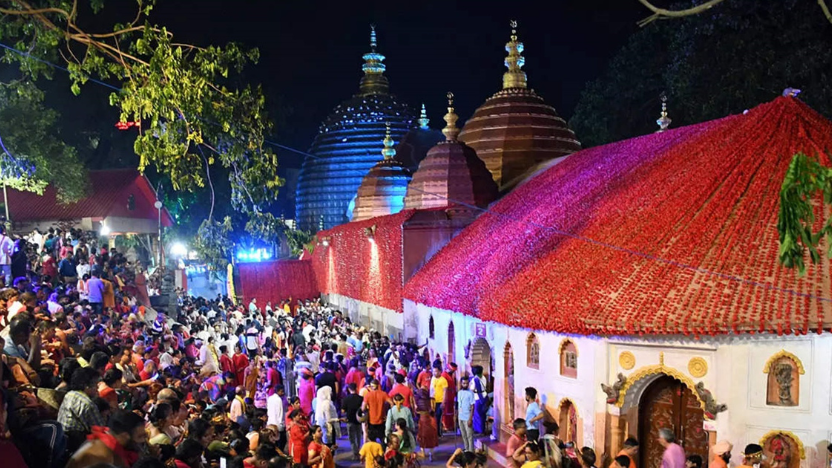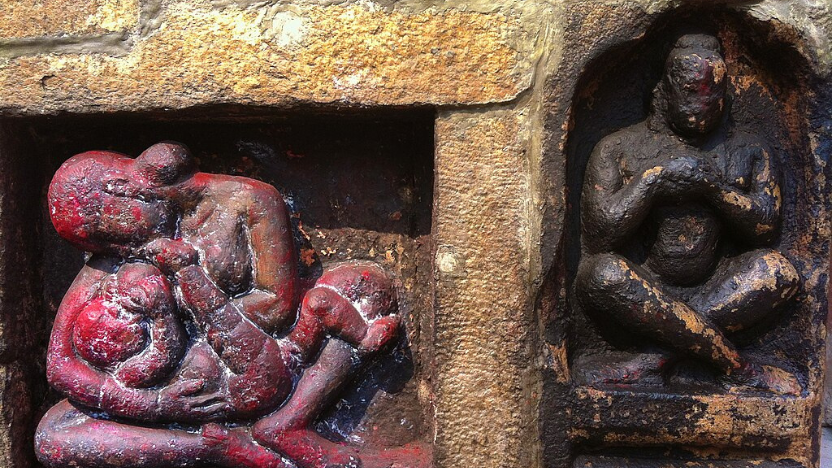Thousands of devotees have gathered in Assam for the annual Ambubachi Mela, one of the most significant religious congregations in Northeast India. Celebrated at the renowned Kamakhya Temple in Guwahati, this unique festival holds deep spiritual significance, drawing lakhs of devotees, spiritual seekers, and curious travellers from across the country and beyond.
Located atop the Nilachal Hills in Guwahati, the Kamakhya Temple is dedicated to Goddess Kamakhya, also revered as Kameshvari, the powerful goddess of desire and fertility. Steeped in mythology and tantric traditions, Kamakhya is counted among the 51 Shakti Peethas, sacred sites that mark the places where parts of Goddess Sati's body are believed to have fallen following her self-immolation and the cosmic dance of destruction performed by Lord Shiva.
According to legend, Devi Sati's reproductive organ fell at the site where the Kamakhya Temple now stands, making it a powerful symbol of fertility and the generative forces of nature. For this reason, the temple is often referred to as the shrine of the “Bleeding Goddess.”
So, what is Ambubachi Mela all about?
Held annually during the onset of the monsoon season in June, the Ambubachi Mela symbolises the menstruation period of Goddess Kamakhya. It is one of the most significant festivals associated with Tantric Shaktism, celebrating the cyclical power of creation, fertility, and feminine energy.

During this time, the temple doors remain closed for three days, marking the period when it is believed that the goddess undergoes her annual menstrual cycle. This year, the temple will be closed from June 22 to June 25, and will reopen ceremonially on June 26, when thousands of devotees will seek the first darshan of the rejuvenated deity.
As sociologist Sangeeta Das highlights in her research on the festival, the Ambubachi Mela does not centre on worshipping an idol but rather honours a process, the natural and divine process of menstruation. The festival reflects a profound cultural association between fertility, agriculture, and the creative power of womanhood. Symbolically, during this period, all agricultural activities, including ploughing and sowing, are suspended as a mark of reverence for Mother Earth's fertility.
An important tradition during the Ambubachi Mela is the distribution of cloth fragments stained with the symbolic blood mark of the Goddess. These cloth pieces, believed to carry divine blessings, are preserved by devotees as protective amulets, safeguarding their homes and families.
The festival, often referred to as the “Mahakumbh of the East,” not only highlights the unique cultural fabric of Assam but also underscores the spiritual acknowledgment of menstruation, a subject often considered taboo in many societies as a sacred, life-sustaining process.

The Ambubachi Mela is not merely a religious observance but a celebration of life, fertility, and the cyclical forces of nature. It reminds devotees and observers alike of the deep reverence that ancient Indian traditions hold for the feminine divine and the creative power that sustains the world.
Source / Image Credit : Hireacamp, Northeast News, Mystical Bee, The Better India,Sahapedia, Kamakhya Temple
Located atop the Nilachal Hills in Guwahati, the Kamakhya Temple is dedicated to Goddess Kamakhya, also revered as Kameshvari, the powerful goddess of desire and fertility. Steeped in mythology and tantric traditions, Kamakhya is counted among the 51 Shakti Peethas, sacred sites that mark the places where parts of Goddess Sati's body are believed to have fallen following her self-immolation and the cosmic dance of destruction performed by Lord Shiva.
According to legend, Devi Sati's reproductive organ fell at the site where the Kamakhya Temple now stands, making it a powerful symbol of fertility and the generative forces of nature. For this reason, the temple is often referred to as the shrine of the “Bleeding Goddess.”
So, what is Ambubachi Mela all about?
Held annually during the onset of the monsoon season in June, the Ambubachi Mela symbolises the menstruation period of Goddess Kamakhya. It is one of the most significant festivals associated with Tantric Shaktism, celebrating the cyclical power of creation, fertility, and feminine energy.

During this time, the temple doors remain closed for three days, marking the period when it is believed that the goddess undergoes her annual menstrual cycle. This year, the temple will be closed from June 22 to June 25, and will reopen ceremonially on June 26, when thousands of devotees will seek the first darshan of the rejuvenated deity.
As sociologist Sangeeta Das highlights in her research on the festival, the Ambubachi Mela does not centre on worshipping an idol but rather honours a process, the natural and divine process of menstruation. The festival reflects a profound cultural association between fertility, agriculture, and the creative power of womanhood. Symbolically, during this period, all agricultural activities, including ploughing and sowing, are suspended as a mark of reverence for Mother Earth's fertility.
An important tradition during the Ambubachi Mela is the distribution of cloth fragments stained with the symbolic blood mark of the Goddess. These cloth pieces, believed to carry divine blessings, are preserved by devotees as protective amulets, safeguarding their homes and families.
The festival, often referred to as the “Mahakumbh of the East,” not only highlights the unique cultural fabric of Assam but also underscores the spiritual acknowledgment of menstruation, a subject often considered taboo in many societies as a sacred, life-sustaining process.

The Ambubachi Mela is not merely a religious observance but a celebration of life, fertility, and the cyclical forces of nature. It reminds devotees and observers alike of the deep reverence that ancient Indian traditions hold for the feminine divine and the creative power that sustains the world.
Source / Image Credit : Hireacamp, Northeast News, Mystical Bee, The Better India,Sahapedia, Kamakhya Temple







